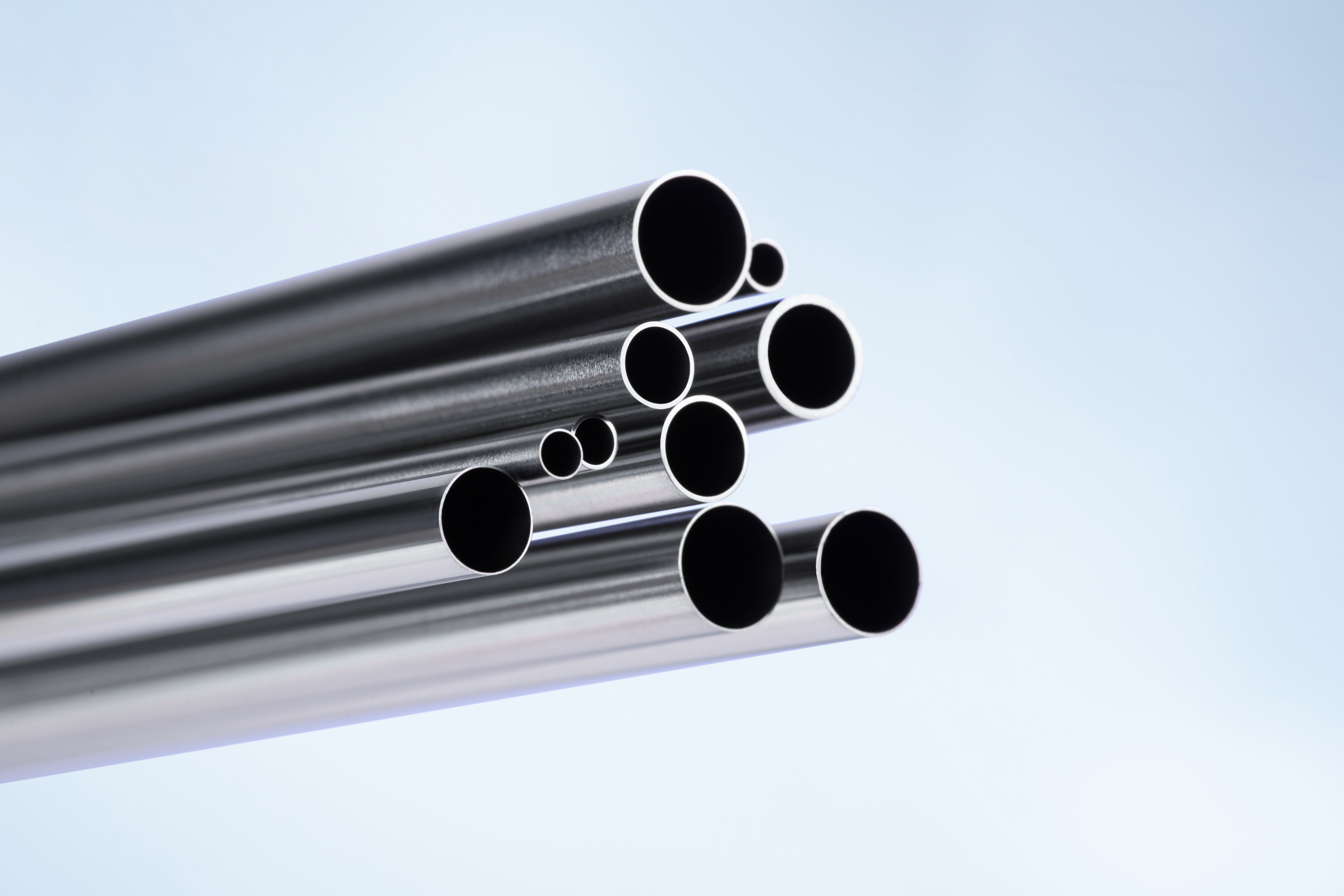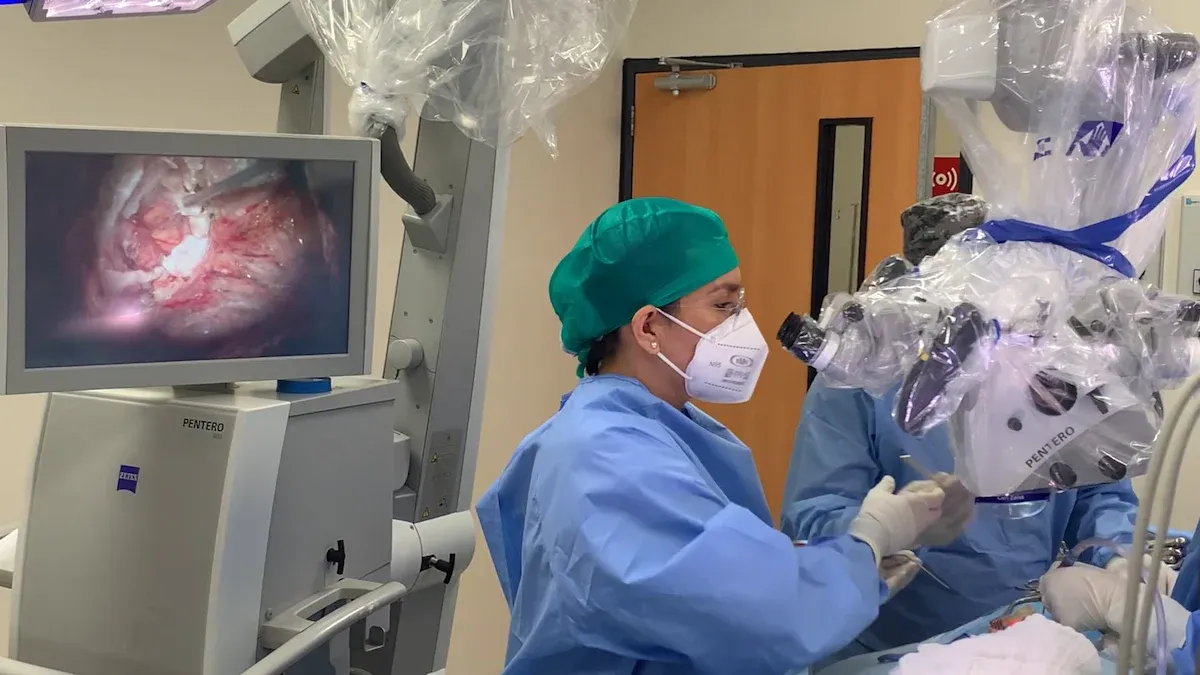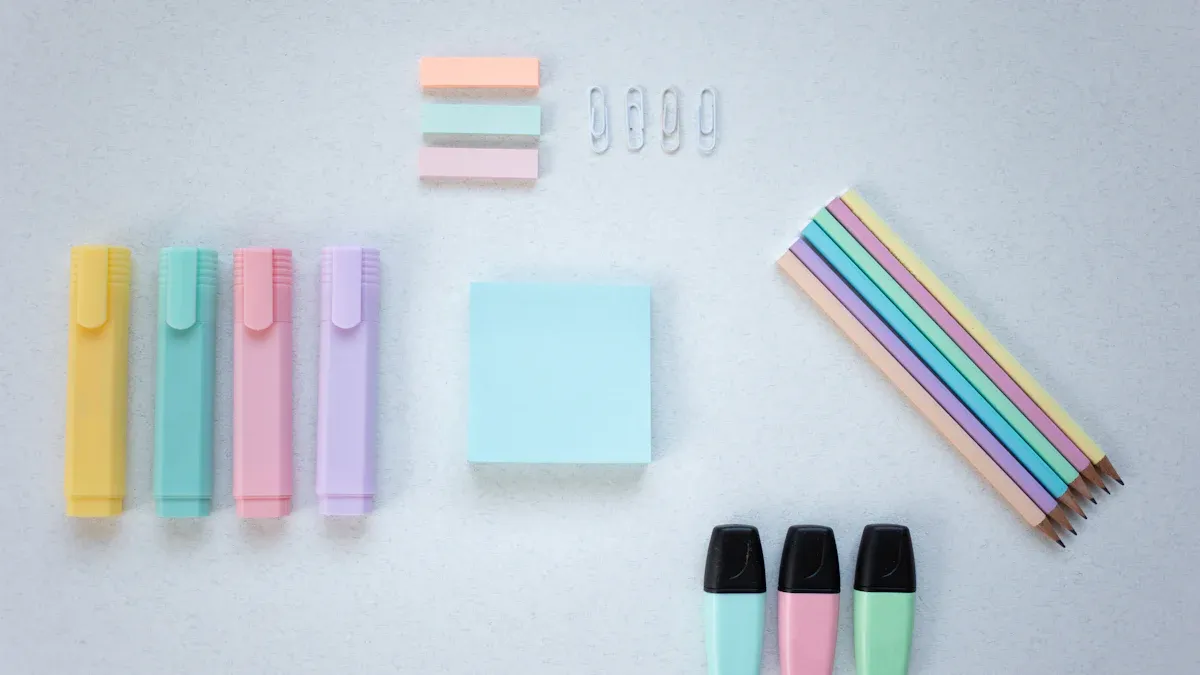How to Choose Nitinol Tubing for Neurovascular Stents

Selecting nitinol tubing for neurovascular stents is vital for ensuring optimal performance and patient safety. Its unique material properties, such as superelasticity and biocompatibility, make it ideal for medical applications. Precision in dimensions and manufacturing processes directly impacts the durability and fatigue resistance of stents, which are designed to endure millions of cycles without failure. Studies reveal that high-purity nitinol significantly reduces fracture risk, as inclusions or voids in the material can compromise its integrity under stress. Reliable suppliers enhance outcomes by adhering to strict industry standards and offering customization options tailored to neurovascular needs.
Key Takeaways
Nitinol tubing can bend and return to shape easily. This helps stents fit tricky blood vessel shapes and lowers problems during use.
Nitinol is safe for the body and doesn’t cause swelling. This makes it good for working with brain and blood vessel tissues.
Exact tubing sizes are important for stents to work well. It makes them bendy and easy to move through tight blood vessels.
Picking trusted suppliers ensures the nitinol tubing is top quality. This makes devices safer and more dependable for patients.
Custom designs let makers adjust nitinol tubing for special needs. This improves how well stents work in the body.
Material Properties of Nitinol Tubing

Superelasticity and Shape Memory
Nitinol tubing exhibits unique properties that make it ideal for neurovascular stents. Superelasticity and shape memory allow nitinol to return to its original shape after deformation. This characteristic ensures that stents can adapt to the complex and dynamic environment of neurovascular systems. For example, when a stent is deployed in a curved artery, nitinol tubing maintains its structural integrity while conforming to the vessel's shape. This adaptability reduces the risk of complications, such as vessel damage or improper placement.
The superelasticity of nitinol tubing also enhances its performance under stress. Unlike traditional materials, nitinol can undergo significant deformation without permanent damage. This property is particularly important for neurovascular stents, which must endure constant movement and pressure changes within the body. Shape memory further ensures that the stent remains effective over time, even in challenging conditions.
Biocompatibility for Neurovascular Applications
Biocompatibility is a critical factor when selecting nitinol tubing for neurovascular stents. Nitinol's ability to interact safely with human tissue minimizes the risk of adverse reactions, such as inflammation or thrombosis. Clinical trials have demonstrated the biocompatibility of nitinol tubing in both in vitro and in vivo settings.
Study Type | Findings |
|---|---|
In Vitro | The TFN device was successfully deployed in a curved artery model, showing no significant mechanical issues. |
In Vivo | The device demonstrated biocompatibility with no significant thrombosis or abnormalities in a swine model. |
Overall | The TFN flow-diverter shows potential for clinical use in neurovascular applications, particularly for aneurysms. |
These findings highlight nitinol's suitability for neurovascular applications, where safety and performance are paramount. The material's biocompatibility ensures that stents can function effectively without causing harm to surrounding tissues.
Fatigue Resistance and Durability
Nitinol tubing offers exceptional fatigue resistance and durability, making it a reliable choice for neurovascular stents. Stents must withstand millions of cycles of stress and strain without failure. Nitinol's unique properties enable it to endure these conditions while maintaining its structural integrity.
Nitinol implants typically experience up to 100 million fatigue cycles in scenarios like walking and stair climbing.
Devices around the heart can exceed 400 million fatigue cycles.
Accelerated fatigue testing mimics clinical use, ensuring that nitinol tubing performs reliably under real-world conditions.
This level of durability is essential for neurovascular stents, which operate in a highly dynamic environment. The ability of nitinol tubing to resist fatigue ensures long-term performance and reduces the risk of complications.
Dimensional Considerations for Neurovascular Stents

Tubing Size and Diameter
The size and diameter of nitinol tubing play a crucial role in the performance of neurovascular stents. These stents must navigate intricate pathways within the brain's vascular system, requiring precise dimensions to ensure flexibility and maneuverability. Engineering studies emphasize the importance of optimizing tubing size to achieve smooth tracking and seamless deployment during procedures. A well-designed stent must balance flexibility with structural integrity, allowing it to adapt to the complex neurovascular environment without compromising performance.
Dimensional specifications for nitinol tubing should include effective length, inner and outer diameters, and crossing profiles. Measurements must account for circumferential differences by evaluating six points: each end, the middle, and two circumferential points 90˚ apart. For unexpanded stents, manufacturers must provide detailed specifications, including the expanded diameter for balloon-expandable designs. These precise measurements ensure that the tubing meets the stringent requirements of neurovascular applications.
Wall Thickness and Stent Design
Wall thickness significantly impacts the design and functionality of neurovascular stents. Thinner walls enhance flexibility, allowing the stent to conform to the vessel's shape and navigate tight curves. However, the wall must also provide sufficient strength to maintain the stent's structural integrity under stress. Nitinol tubing offers an ideal balance between these attributes, making it a preferred choice for high-performance stents.
The relationship between wall thickness and stent design is critical. A thinner wall reduces the crossing profile, improving the stent's ability to pass through microcatheters. This feature is essential for neurovascular procedures, where precision and adaptability are paramount. Manufacturers must carefully control wall thickness during production to ensure consistent performance across all stents.
Precision and Tolerances
Dimensional precision is vital for neurovascular stents, as even minor deviations can affect their performance. Tolerances for high-precision applications must be strictly adhered to during manufacturing. Nitinol tubing requires advanced techniques to achieve the necessary precision, ensuring that each stent meets the exacting standards of neurovascular applications.
Manufacturers must evaluate tolerances at multiple points along the tubing to ensure uniformity. This process includes measuring the tubing's dimensions at each end, the middle, and circumferentially. Such rigorous quality control minimizes the risk of complications during stent deployment and enhances patient outcomes. The ability of nitinol tubing to maintain tight tolerances makes it an indispensable material for neurovascular stents.
Manufacturing Processes for Nitinol Tubing
Precision Manufacturing Techniques
Precision manufacturing plays a pivotal role in producing high-quality nitinol tubing for neurovascular stents. Advanced techniques ensure that the tubing meets stringent dimensional and material specifications. Each stage of production, from melting the nickel-titanium alloy to forming the final tubing, undergoes rigorous quality control. This process minimizes variations in material composition, which could otherwise affect the shape memory and mechanical properties of nitinol.
Key aspects of precision manufacturing include dimensional accuracy and performance testing. Manufacturers use cutting-edge equipment to achieve exact size and shape requirements, ensuring that the tubing functions effectively during stent deployment. Performance testing further verifies the tubing's mechanical strength, fatigue resistance, and shape memory. These measures guarantee that nitinol tubing performs reliably in the dynamic neurovascular environment.
Variations in nickel and titanium content are carefully monitored to maintain consistent material properties.
Dimensional accuracy ensures proper stent deployment and functionality.
Rigorous testing confirms the tubing's durability and adaptability under stress.
Surface Finish and Concentricity
The surface finish of nitinol tubing directly impacts its biocompatibility and performance in neurovascular applications. A smooth surface reduces the risk of complications, such as tissue irritation or infection, by minimizing imperfections that could interact with surrounding tissues. Manufacturers employ advanced polishing and finishing techniques to achieve the desired surface quality.
Concentricity, or the uniformity of the tubing's wall thickness, is equally important. Inconsistent wall thickness can compromise the stent's structural integrity and flexibility. Precision manufacturing ensures that nitinol tubing maintains tight tolerances, resulting in consistent concentricity. This uniformity enhances the tubing's ability to navigate the intricate pathways of the neurovascular system without compromising performance.
Customization for Neurovascular Applications
Customization is essential for tailoring nitinol tubing to the unique demands of neurovascular stents. Each application requires specific dimensions, wall thicknesses, and mechanical properties to ensure optimal performance. Manufacturers collaborate closely with medical device designers to create tubing that meets these precise requirements.
For neurovascular stents, customization often involves designing tubing with ultra-thin walls and small diameters to navigate narrow and curved blood vessels. Additionally, surface treatments may be applied to enhance biocompatibility and reduce the risk of thrombosis. By offering tailored solutions, manufacturers enable the development of stents that address the complex challenges of neurovascular procedures.
Tip: Collaborating with experienced manufacturers ensures that nitinol tubing is customized to meet the exacting standards of neurovascular applications, enhancing both performance and patient safety.
Performance Requirements for Neurovascular Stents
Flexibility and Adaptability
Flexibility is a key performance requirement for neurovascular stents. These devices must navigate the intricate and delicate pathways of the brain's vascular system. Nitinol tubing provides the necessary flexibility due to its superelastic properties. This material allows stents to bend and conform to the shape of blood vessels without losing structural integrity.
Adaptability is equally important. Neurovascular stents must adjust to dynamic conditions within the body, such as changes in blood flow or vessel movement. Nitinol tubing excels in this regard. Its shape memory ensures that stents return to their intended form after deployment. This adaptability minimizes the risk of complications, such as improper placement or vessel damage.
Note: The flexibility and adaptability of nitinol tubing make it ideal for neurovascular applications, where precision and performance are critical.
Durability Under Stress
Durability is essential for neurovascular stents, which operate in a challenging environment. These devices endure constant pressure and movement within blood vessels. Nitinol tubing offers exceptional durability due to its fatigue resistance. This property ensures that stents can withstand millions of cycles of stress without failure.
Clinical studies highlight the importance of durability in neurovascular applications. Stents made from nitinol tubing maintain their performance over time, reducing the risk of fractures or material degradation. Accelerated fatigue testing confirms the reliability of nitinol under real-world conditions.
Key Features of Nitinol Tubing Durability:
Resists fatigue over extended periods.
Maintains structural integrity under stress.
Reduces the risk of complications, such as stent failure.
The durability of nitinol tubing ensures long-term performance, making it a preferred choice for neurovascular stents.
Compatibility with Neurovascular Procedures
Compatibility with neurovascular procedures is a critical factor in stent design. Nitinol tubing meets the stringent requirements of these applications due to its unique properties. Its biocompatibility ensures safe interaction with human tissue, minimizing the risk of adverse reactions.
Neurovascular stents must also integrate seamlessly with medical devices, such as microcatheters and guidewires. Nitinol tubing's precision and dimensional accuracy enable smooth deployment during procedures. Additionally, its surface finish reduces friction, enhancing maneuverability within blood vessels.
Tip: Collaborating with experienced manufacturers ensures that nitinol tubing is optimized for neurovascular procedures, improving both device performance and patient outcomes.
Choosing a Supplier for Nitinol Tubing
Medical-Grade Expertise and Certifications
Selecting a supplier with medical-grade expertise ensures that nitinol tubing meets the stringent requirements of neurovascular device selection. Suppliers with ISO 13485 certification demonstrate their commitment to quality management systems tailored for medical devices. This certification guarantees that production processes align with international standards, enhancing reliability and safety. FDA compliance further validates the supplier’s ability to meet regulatory guidelines, including 510(k) clearance for neurovascular stents. These certifications not only ensure product quality but also reflect the supplier’s dedication to patient safety.
Biocompatibility testing plays a crucial role in verifying the suitability of nitinol for neurovascular applications. Suppliers conduct rigorous testing to confirm that their tubing interacts safely with human tissue, minimizing risks such as thrombosis or inflammation. While these certifications and testing protocols increase production costs, they provide assurance that the tubing meets medical device requirements.
Certification/Benchmark | Description | Financial Impact |
|---|---|---|
ISO 13485 | Quality management system for medical devices | Adds 20-25% to total costs |
FDA Compliance | Adherence to FDA guidelines (e.g., 510(k) clearance) | Clinical trials can exceed $5 million |
Biocompatibility Testing | Ensures materials are safe for medical use | Increases product pricing due to testing costs |
Supplier Capabilities and Customization
A supplier’s capabilities directly impact the quality and performance of nitinol tubing. Advanced manufacturing techniques ensure dimensional accuracy, with standard specifications including outer diameters of 1.61mm, wall thicknesses ranging from 0.1mm to 15mm, and lengths up to 6000mm. Surface finishes, such as electropolishing, enhance biocompatibility and functionality, making the tubing ideal for neurovascular applications.
Customization options allow suppliers to tailor nitinol tubing to specific neurovascular device selection needs. Precision cutting, custom bending, and specialized punching operations enable the creation of tubing that meets unique design requirements. Design consultation services further optimize material specifications, ensuring compatibility with neurovascular stents. Custom packaging protects the tubing during shipping and storage, maintaining its integrity.
Specification/Service | Details |
|---|---|
Dimensional Accuracy | Outer diameter (standard 1.61mm), wall thickness (0.1mm to 15mm), length (up to 6000mm) |
Surface Finishes | Mechanically polished, electropolished; affects biocompatibility and functionality |
Customization Capabilities | Precision cutting, custom bending, welding, decoiling, specialized punching operations |
Design Consultation | Assistance in optimizing material specifications for specific applications |
Custom Packaging Options | Protects tubes during shipping and storage |
Ensuring Compliance with Industry Standards
Compliance with industry standards ensures that nitinol tubing meets quality assurance and testing protocols. Suppliers must adhere to strict guidelines to produce tubing suitable for neurovascular applications. ISO 13485 certification and FDA compliance serve as benchmarks for quality and regulatory adherence. These standards guarantee that the tubing performs reliably under stress and integrates seamlessly into neurovascular stents.
AccuPath stands out as a supplier that prioritizes compliance and quality. Their nitinol tubing undergoes rigorous testing to ensure durability, biocompatibility, and precision. By aligning their processes with industry standards, AccuPath delivers tubing that meets the demands of neurovascular procedures while maintaining patient safety.
Tip: Partnering with suppliers like AccuPath ensures access to high-quality nitinol tubing that complies with industry standards, enhancing device performance and reliability.
Selecting the right nitinol tubing is crucial for designing effective neurovascular stents. Aligning tubing specifications with stent design ensures compatibility with the intricate neurovascular system. Evaluating material properties, such as superelasticity and biocompatibility, guarantees optimal performance and patient safety.
Manufacturing precision, dimensional accuracy, and supplier reliability further enhance the tubing's quality. Collaborating with certified suppliers ensures compliance with industry standards and access to tailored solutions.
Key Takeaway: Prioritizing quality and precision in nitinol tubing selection leads to better stent performance, reduced complications, and improved patient outcomes.
FAQ
What makes nitinol tubing ideal for neurovascular stents?
Nitinol tubing offers unique properties like superelasticity, shape memory, and corrosion resistance. These features ensure adaptability, durability, and compatibility with neurovascular tools. Its biocompatibility makes it suitable for biomedical applications, reducing risks like inflammation or thrombosis.
How does corrosion resistance impact the performance of nitinol tubing?
Corrosion resistance enhances the longevity and reliability of nitinol tubing in high-precision applications. It prevents material degradation when exposed to bodily fluids, ensuring devices maintain their structural integrity and performance over time.
Why is precision important in manufacturing nitinol tubing for neurovascular stents?
Precision ensures that nitinol tubing meets the exacting standards required for neurovascular tools. Accurate dimensions and tolerances improve the functionality of devices, enabling smooth deployment and reducing complications during procedures.
Can nitinol tubing be customized for specific biomedical applications?
Yes, manufacturers can customize nitinol tubing for specific biomedical applications. Customization includes adjusting dimensions, wall thickness, and surface finishes to meet the unique requirements of neurovascular tools and other devices.
How do neurovascular tools benefit from nitinol tubing's properties?
Neurovascular tools benefit from nitinol tubing's flexibility, corrosion resistance, and precision. These properties allow devices to navigate complex vascular pathways, maintain durability under stress, and perform reliably in challenging environments.
See Also
Choosing The Ideal Nitinol Tubing Supplier For You
Comprehensive Guide To Selecting The Perfect Nitinol Tubing
Detailed Instructions For Creating Nitinol Microtubing In Neurovascular Use
Understanding The Manufacturing Process Of Nitinol Tubing For Medicine
The Importance Of Nitinol Tubing In Minimally Invasive Surgery

